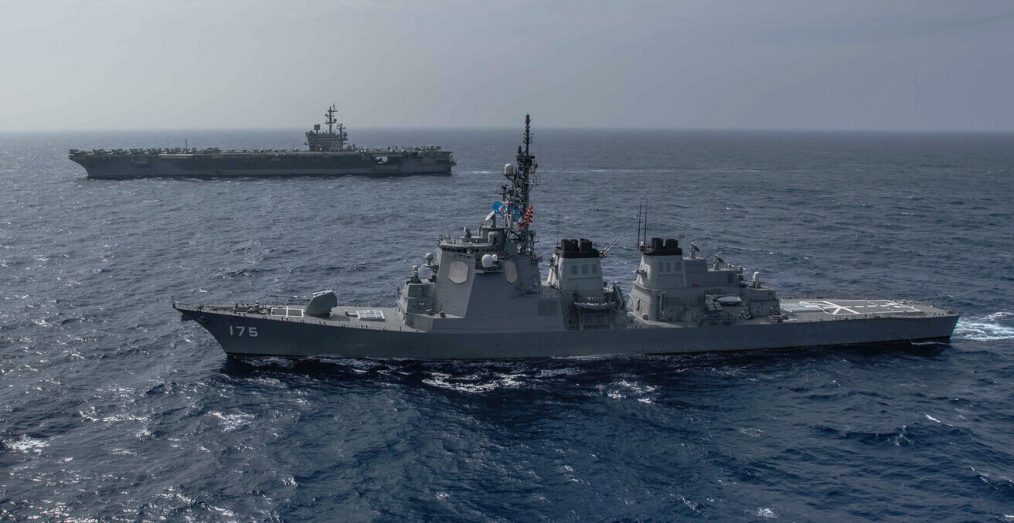The Indo-Pacific is the busiest and most contested area in relation to international security, with multiple players, agendas, and interests. Australia’s interests in the region are driven by the recognition that great power politics are increasingly being played out in the maritime space.

The Indo-Pacific region is home to more than half of the world’s population, nearly two-thirds of the world’s economy, and seven of the world’s largest militaries. As Australia locates between the two gigantic oceans, there has been sea of analyses about strategy, geopolitics, and challenges in the Indo-Pacific, indicating Australia’s strong interest the region. Canberra, indeed, has several strategies that have been formulated to address the region, such as the 2016 Defence White Paper, the 2017 Foreign Policy White Paper, the 2020 Defence Strategic Update, and the 2022 Australian Government Civil Maritime Security Strategy. These strategies, due to the complexity of the Indo-Pacific geostrategic environment, were formulated to address certain aspects of security in the maritime domain.
Primarily, the concept of the Indo-Pacific region emerges in Australia to reflect “the rising importance of the maritime as a strategic domain of great power competition.” The United States, the sole global maritime superpower and Australia’s traditional security ally, has prioritised the region in its security strategy since Barack Obama’s “pivot to Asia” in the early 2010s. Seeking to maintain its regional and global dominance, Washington has increased its presence and solidified ties with its allies in the Indo-Pacific.
China, the United States’ strategic competitor, has had a growing interest in the Indo-Pacific. The “westward” (xijin) strategy emerged in the late 2000s, in which Beijing gradually turned seaward to secure its energy supply and sea lines of communication from the choke point at the Strait of Malacca toward the Indian Ocean. The strategy was later developed into the Belt and Road Initiative (BRI) with greater emphasis of China’s economic statecraft. Additionally, the Chinese Navy has been growing assertively in the past decade, developing more advanced vessels and making increasingly aggressive moves.
Although the navies of India and Japan are not as competitive as the two great powers, they are significant regional sea powers in relation to geostrategic competition. India has traditionally served as a dominant power in South Asia and has become more concerned with securing the Indian Ocean against the rise of China. In addition, Modi’s “Act East” policy reflects India’s greater engagement with Southeast Asia and China’s ambition in the Indo-Pacific. Japan, on the other hand, is the initiator of the “Free and Indo-Pacific” (FOIP) strategy. As part of its security strategy, Tokyo has been proactively expressing its interests in taking a leadership role in the building of a multipolar regional order in Indo-Pacific.
Last but not least, there are littoral states from various regions that are facing different kinds of maritime threats, which include piracy in Southeast Asia, climate change in Pacific Islands countries, a lack of security along maritime trade routes in the Indian Ocean, and illegal, unreported, and unregulated (IUU) fishing and territorial disputes in the South China Sea.
Australia’s role in the Indo-Pacific
Australia now faces several countries and a variety of sea powers that have varied visions of the region. Indeed, Australia neither behaves as a sea power with the aim of establishing influence in the maritime domain nor is it a small maritime state that is more concerned about a particular threat. Instead, it is a continent that is surrounded by four bodies of waters.
Unlike other sea powers, it is impossible for Australia to address every issue in the Indo-Pacific, which, by definition, includes at least three continents with diverse political, economic, and ecological environments. In Australia’s adjacent waters, there is a laundry list of maritime threats that challenge Australia’s security interests. Not to mention, much of the Southern Indian Ocean is uncharted, and it is in these areas where Australia’s strategy is least developed.
Maritime security is a broad concept that does not limit to national security, such as territorial disputes, naval capability, and geopolitical strategies. It should not be focused solely on security on the surface of the sea, but also in other dimensions of the maritime domain, particularly the underwater and the seabed. Protection of natural resources and maritime trade, transnational blue crimes, environmental threats, marine safety, and scientific research in the maritime domain also deserve attention when formulating maritime security strategy.
In fact, ideational factors help Australia to relate its interests and agenda to these maritime security threats. As a maritime state that relies heavily on trade and export of primary resources, it is reasonable that Australia is concerned about these issues. As an international actor, transnational issues such as climate change are always on Australia’s policy agenda. In addition, as a middle power and active participant of the liberal international order, Australia has emphasised ocean governance in accordance with the rules-based order. Therefore, while Canberra continues to promote the FOIP strategy, Australia’s engagement in deepening regional maritime security cooperation in these areas is crucial. Recent efforts in the Blue Pacific Initiative and the Civil Maritime Security Strategy have suggested that Australia’s maritime interest is beyond strategic competition among sea powers.
Overall, Australia needs to have a maritime strategy in the Indo-Pacific, but it must be comprehensive. This does not mean that naval power is unimportant, but there needs to be more of a focus on maritime security and ocean governance.
